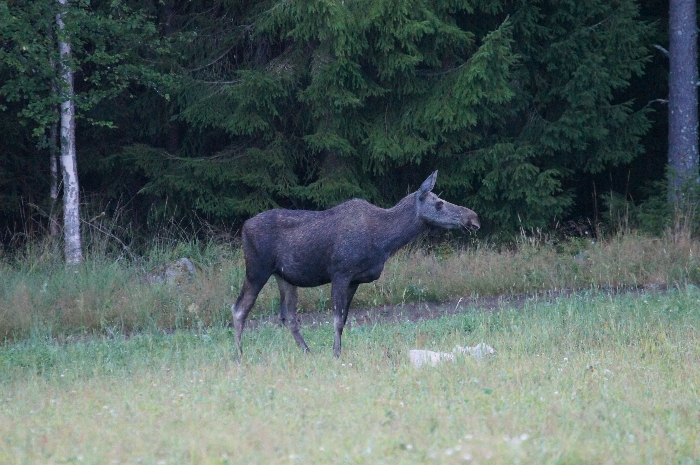Scientific name: Alces alces
Family: Cervidae
Appearance: The Eurasian Elk resembles the moose (Alces americanus) to which it is closely related. It has humped shoulders, long legs and a relatively short tail. Elk have elongated, bony heads with a broad, overhanging muzzle and large ears. They also have a pendulous flap of skin and hair that hangs beneath the throat which is known as a ‘bell’. Males are larger than females and have broad, flattened antlers which are shed in winter and regrow in spring and summer.
Size: Height at shoulder 140-235 cm; Head and body length 240 - 310 cm; Tail 5-12 cm; Weight 380-700 kg (males), 200-360 kg (females)
Natural history: Elk are most active at dawn and dusk. Their diet consists mainly of trees, shrubs and herbs but in the winter they will also eat twigs and bark. Elk also eat aquatic vegetation and, being strong swimmers, will enter lakes and rivers to get to food. Generally solitary, they may form small groups during the winter. The Elk rut (mating season) takes place in September and October when the males put on elaborate displays and sometimes fight to gain access to females. The young are born between May and June, usually a single calf although occasionally twins. The juveniles stay with their mother until she next gives birth when they are driven away.
It is thought that the Elk may have survived in Scotland until around 900 CE but habitat loss and hunting eventually drove it to extinction in Great Britain. It survives in parts of northern and eastern Europe, Scandinavia, northern China and possibly Mongolia.

(C) Tim Ellis (shared under a CC BY-NC 2.0 license)

 English (United Kingdom)
English (United Kingdom)  Czech (Čeština)
Czech (Čeština)  Nederlands (nl-NL)
Nederlands (nl-NL)  Magyar
Magyar  Deutsch (Deutschland)
Deutsch (Deutschland)  Croatian (Hrvatski)
Croatian (Hrvatski)  Polski (PL)
Polski (PL)  Español (España)
Español (España)